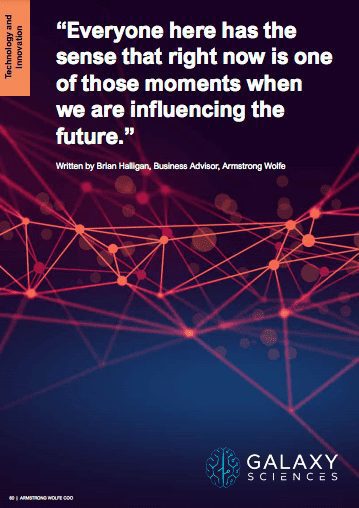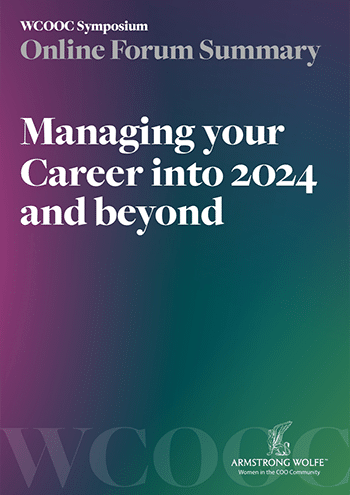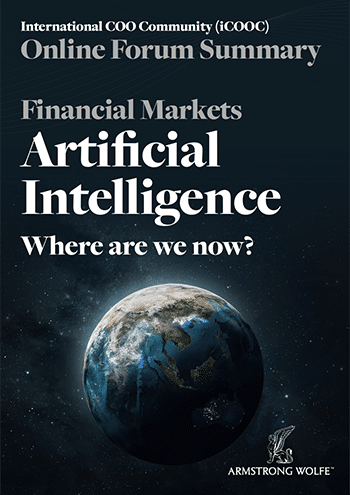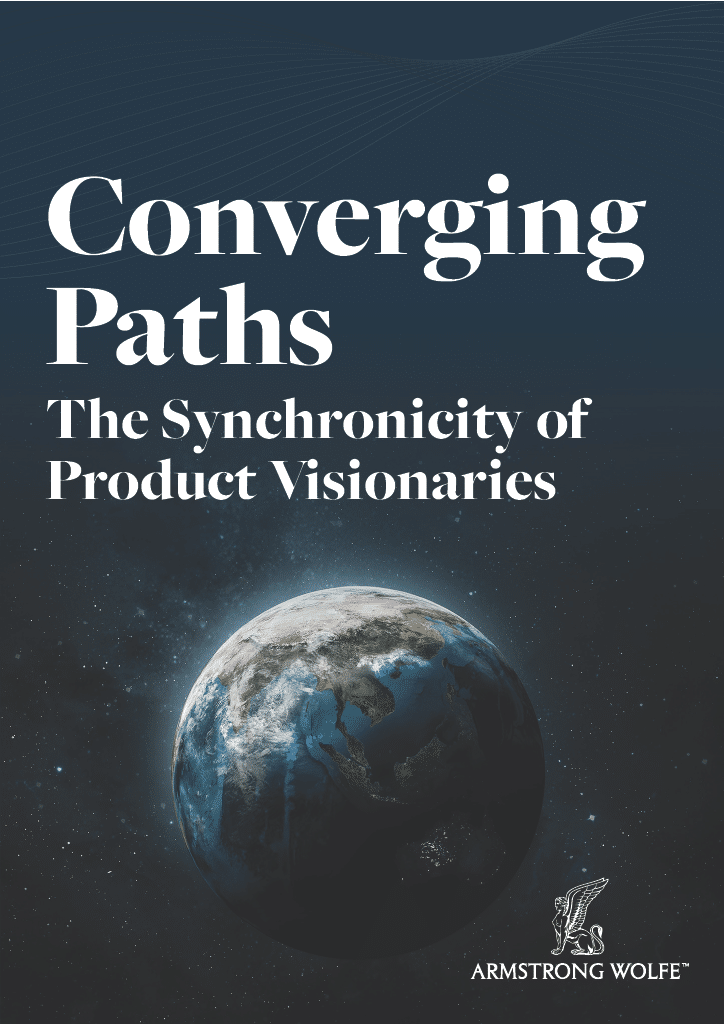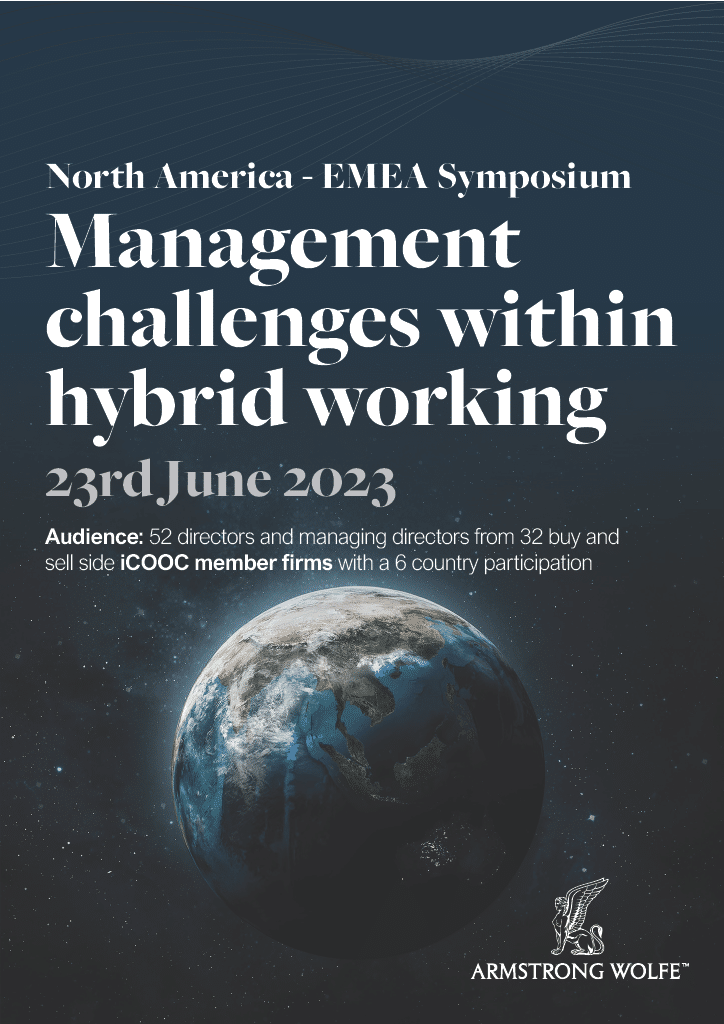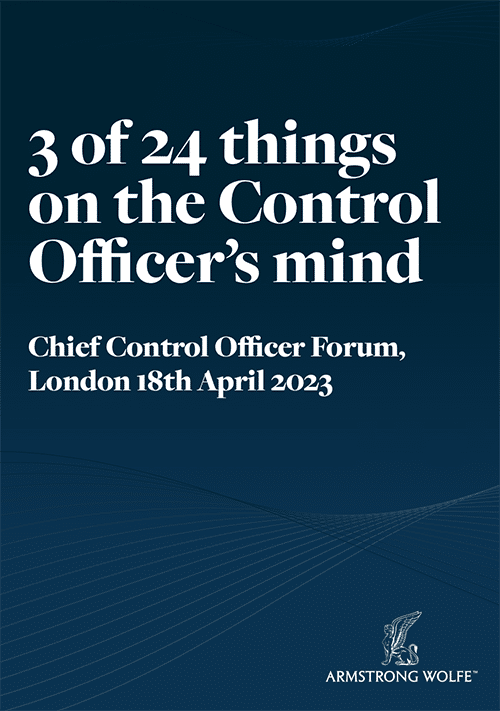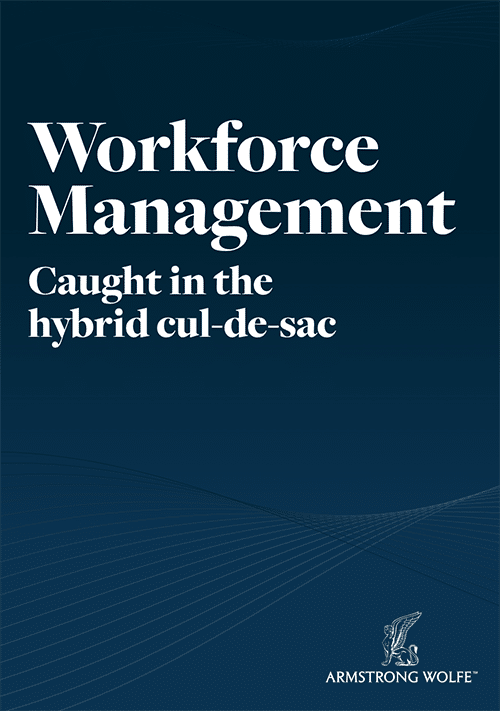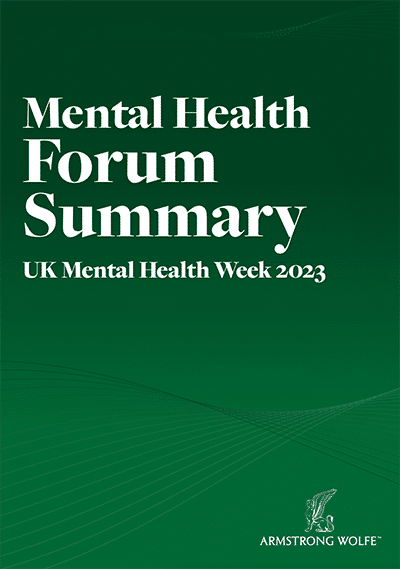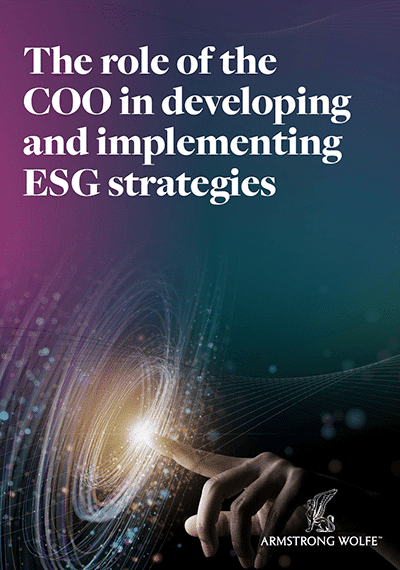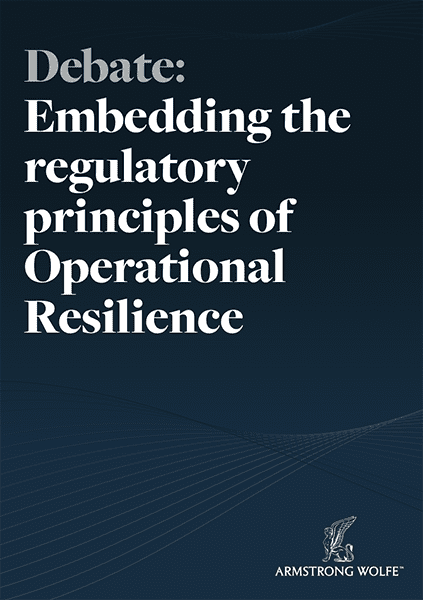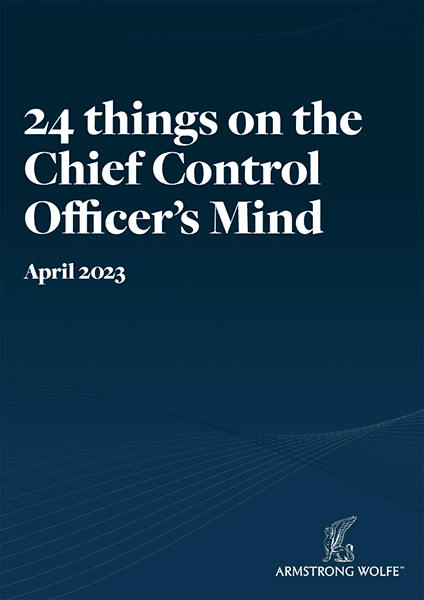Written by Brian Halligan, Business Advisor, Armstrong Wolfe
“Everyone here has the sense that right now is one of those moments when we are influencing the future”.*
No, those words were not heard on a Zoom call between senior Execs of any one of dozens of global investment banks. They were quoted by Steve Jobs during an interview for a magazine article in 1985! While Jobs was illustrating the universal feeling among Apple employees at the time, the statement is just as relevant today as COVID-19 has forced financial firms to consider strategies that will define the future of work in the postpandemic era and long after.
Yes, the industry weathered the operational complexities, staffing challenges and market volatility from the COVID storm reasonably well. Business resumption plans were implemented and supplemented with good ole’ ingenuity, long hours and lots of dedicated staff doing what was necessary to ensure the continuity of business and client service, as well as staff safety. But what is next? As companies around the world develop plans to exit the COVID restriction period, firms are evaluating the cost/ benefit of leveraging remote working strategies in their go-forward operating models. Longer term cost savings from a reduced requirement for physical space and equipment, in addition to a more attractive work-life balance proposition, will be weighed against potential reductions in staff productivity, team collaboration and the need for enhanced controls and supervision.
One consistent theme that has been echoed during Armstrong Wolfe’s regular COVID-19 response calls is the potential negative impact on staff members whose roles have gone remote. Top of the list of concerns is staff well-being and the potential negative effects brought on by feelings of isolation. In addition, firms recognize that a larger remote work force will create additional challenges
when it comes to infusing a consistent firm culture, supporting an environment of inclusion among employees and ensuring remote staff have equal growth opportunities compared to their colleagues who are physically in the office.
Many firms and managers have taken proactive steps toward addressing some of these challenges by holding frequent one to one staff meetings, scheduling regular team video calls, supporting team social events like virtual happy hours, and more recently by conducting staff surveys. But are these measures effective – and even sustainable – in the longer term? What tools are/will be available for managers to supplement their efforts? What existing technologies will support go-forward operating models? What new tools will be required to fill developing needs? What role can Artificial Intelligence (AI) play in supporting the financial markets workplace of the future?
To try and answer some of these challenging questions, I spoke with Harry Toukalas, co-CEO of Galaxy Sciences, a technology and advisory firm that combines AI with behavioral science as a means of helping firms improve performance, drive productivity, nurture wellbeing and reduce risk.
Hi Harry, tell us a little about Galaxy Sciences.
Galaxy Sciences was founded by Dr Peter Gloor from MIT in 2007. As a research scientist, Peter wondered if it would be possible to understand and predict human behavior by analyzing communication patterns found in workplace data such as email. Despite a great deal of skepticism at the time, he proved it can be done and proceeded to spawn the massive industry we know today as organizational communication analytics. Our technology for this is called GalaxyLens. Peter is a creative futurist at heart and continues to push the boundaries of using data to understand human behavior. For example, he’s recently invented a way to incorporate all the computation power and advanced Artificial Intelligence required to measure and predict human behavior into a smartphone app called a “Social Compass”.
What is behavioral science and why is it so relevant today?
Behavioral Science is about understanding, predicting, and influencing how people behave. To achieve this, Behavioral Science combines Economics, Psychology, Neuroscience, and Sociology. Separately, these disciplines do not provide a complete picture of human behavior and the reasons for the decisions we make. When combined, they can deliver a far more comprehensive way of understanding our decision making and the contextual effects on our environment. That is imperative if you want to improve organizational performance.
What is the interconnectivity between AI and Behavioral Science?
The typical way Behavioral Science information is collected is through observation, surveys and interviews. However, large scale manual observation is very difficult whilst survey and interview answers are always prone to bias. This means you may not be getting an accurate picture of the culture and behavior in your organization. How do you ethically and dynamically observe the behavior of hundreds – or thousands – of people within organizations and how do you reduce the effect of bias in surveys and interviews? That’s where Data Science comes in. It allows you to use the computational power of mass data capture with algorithmic predictiveness to achieve a far more scalable and insightful analysis of behavior. When done right, using machines to analyze behavior can also be more objective than asking people what they think in surveys (although machines can also become biased if not trained correctly).
There are various ways to refer to the interconnection of AI and Behavioral Science and the term I think sums it up well is “Behavioral Data Science” – coined by Patrick Welsh from PwC.
Do you feel that Behavioural Data Science can help to support managers in the financial industry wrestle with the challenges of an expanding remote workforce?
This is where the combination of Data Science and Behavioral Science can be a real game-changer. Behavioral Data Science tools can help you understand someone’s attitude and emotions in a remote working environment – something that is very hard to do on a telephone and video call. In this way, they fill the gap in remote working between the communication process (i.e. calls and videos) and the communication meaning. For example, when I am being positive in response to something, is it because I genuinely agree with it or because I am afraid to speak up and challenge something I don’t really believe in? We usually rely on a person’s unconscious signals, facial expressions, and body language to work this out. When this is not as readily available as it used to be, due to remote working, Behavioral Data Science tools can help managers understand factors like the productivity, wellbeing and risk taking of their teams in a predictive and privacy ensuring manner. For example, the scientifically tested predictive accuracy of our enterprise behavioral analysis tool (GalaxyLens) is around 90%, which means it is very difficult to game and provides managers with alerts and actions to proactively empower their remote working teams.
How do you envision AI and Behavioral Science playing a significant role in supporting financial firms’ new operating models?
The next decade is likely to involve a dramatic change in Financial Services as the industry seeks to reduce costs and improve efficiencies. At the same time, Financial Services firms will need to really embrace innovation and new business opportunities. Technology will be at the center of all these endeavors. For example, Business Process-as a-service (BPaas) is a new operating model revolutionizing Financial Services. Similar to SaaS, with BPaaS, Financial Services firms only pay for the business processes they require and access these on an as-needed basis. At the same time, you should never ignore behavior – particularly in a transformational process. The old saying still applies; “culture eats strategy for lunch”. This is where Behavioral Data Science tools can ensure an organization’s transformation is not just happening at a strategic and process driven level but also at the attitude and behavior level of every single person, irrespective of their role or geographical location. This is how culture can become a true competitive advantage.
Do you think this approach will cause concerns among staff (i.e. Big Brother is watching) and be ineffective if staff resist?
Yes. For example, there is a lot of discussion at the moment about monitoring and scrutinizing employees with technology. This does not necessarily promote trust and collaboration, which becomes all the more crucial when you are trying to transform your organization and when a large percentage of your people are working from home. Rather than surveil the workforce, Behavioral Data Science tools can actually improve the trust and collaboration between employees. It all depends on how the data is collected and shared. In our case, GalaxyLens provides a personalized dashboard for each employee, which only the relevant individual can access. This ensures the process cannot be used against them. Just as importantly, it gives every employee direct and personalized feedback on their behavioral patterns. We call this “Virtual Mirroring”. This enables individuals and/or teams to reflect on their own communication styles, look at their own areas of improvement and perceive themselves from new viewpoints. This leads to increased self-awareness and self-reflection, which creates the conditions for behavioral change. Selfawareness also requires socialization and continuous dialog on the impact that our words and behaviors have on others. To this end, the anonymized teamlevel insights and recommendations produced by GalaxyLens are fronted by monthly Virtual Mirroring sessions with team leaders, where the aggregated communication characteristics of teams can be shared and debated and interventions planned and tracked.
What steps should management take to gain buy-in from staff?
The combination of personal data privacy and socialization of aggregated team-level data helps to remove the fear or resistance employees may have in relation to technology in the workplace. Privacy is paramount for users and security is critical for the IT department. In our case, GalaxyLens completely anonymizes personal data by turning a person’s name and email content into encrypted numbers so no one can see a person’s data even if they tried. It then provides the results of the analysis to; a) each person through a secure personal dashboard only she/he can access and, b) the aggregated team-level data only to relevant team members. From a data security perspective, all the data we analyse remains stored on the client’s servers – no data leaves the client’s business.
Any bold predictions for the future based on the work that Galaxy Sciences is doing?
Currently, everybody is understandably and justifiably concerned about personal privacy. In terms of the future, there is no doubt that data and Artificial Intelligence are going to be an even greater presence in our everyday lives because of the way we will increasingly interact with the world around us. As a result, instead of focusing on the minimization of the data circulating about us, it will be more constructive for industry, government, and society to develop smarter tools for better insights. This will mean creating a future where technology provides everybody with the insight they need – in a privacy-respecting way – to become a better, more creative, and happier individual, both at the workplace and in private life.
Thank you for your time and insights Harry!
The first two decades of the new millennium have been challenging to say the least; 9/11 and increasing acts of terrorism, the credit crisis, significant changes in regulation, the growing threat of cyber-crime and now a global pandemic. The financial industry has a strong track record of responding well to significant disruptions and I have no doubt it will do so again. Firms will have different approaches and apply different solutions, but remote working will likely become as ubiquitous as email, so new tools and techniques must be deployed to help supervisors manage the productivity and well-being of its remote workforce as effectively as if they were sitting within shouting distance. Regardless of the path taken, I don’t believe it’s a stretch to acknowledge that this is one of those defining moments in time where the strategies being developed will have a profound influence on the future of work in the financial industry.
For more information about Galaxy Sciences www.galaxysciences.com
Galaxy Sciences turns data into accurate and predictive insight. Backed by decades of MIT research, we pioneered the organizational communications analytics field by fusing Behavioral Science and Artificial Intelligence. This enables our clients to improve performance, drive productivity, nurture wellbeing and strengthen risk whilst ensuring 100% user privacy.
GalaxyLens Case Study
A banking client was experiencing a problem with the level of collaboration and communication between a risk management team and a sales team. Essentially, the sales team was being very reactive in dealing with risk issues and the risk team was unable to engage effectively with the sales team. This was causing a lack of risk ownership and accountability on the part of the sales team. The sales team was also constantly reacting to risk issues rather than getting out in front of them in a proactive manner. At the same time, the risk team had given up on engaging constructively with the sales team. The results of this dysfunctional behaviour between these two teams was that identified critical non-financial risk issues were not being addressed in a timely and effective manner. On average, the sales team had 66% of their identified critical risk issues exceeding the resolution date.
Week 1:
We ran a communication diagnosis of the two teams using GalaxyLens and identified a major silo mentality between them. This is like an organizational x-ray that reveals the effectiveness or otherwise of communication. The Week 1 illustration shows how the sales team (purple) and the risk team (green) are clearly separated from each other and not collaborating. Each circle or node represents a person. The larger the node, the more influence that person has in the network. The further apart the nodes are from each other the less they communicate with each other.
Week 3:
Following this diagnosis, we implemented a series of behavioural interventions addressing the lack of collaboration between the teams. We did not identify team members by name to ensure confidentiality of personal data. Instead, we focused on team communication patterns. Some of the measures included:
• Response Time: The longer the average time team members take to respond to emails, the less passion those team members have for the topic of the email. In this case study, the average response time of the sales team to emails from other parts of the organization was 16 hours. However, when they received emails from the risk team, they regularly took over 48 hours to provide a response. If your response time to certain emails is 3 times longer than your average (and you’re not on leave or on a special project), it’s unlikely you have a lot of interest in that topic.
• Reminders: The more reminders team members require to respond to emails, the less respect the receiving team has for the sending team. If it usually takes 1 or two friendly reminders for you to follow up on an email, but in some cases you need multiple reminders that become increasingly urgent or ominous, it is unlikely you have a lot of respect for the sender.
• Contribution Ratio: The skewness of the email sending/receiving ratio of team members indicates how proactive and engaged or reactive and disengaged that team is. For example, if the average email sending and receiving ratio for a team is 50/50 (i.e. around 50% sending and 50% receiving emails), but when interacting with some parts of the business the ratio for that team is 30% sending and 70% receiving (i.e. mainly receiving rather than sending emails), it is unlikely that team is proactively engaging with the other team.
Week 6:
Our interventions to improve the collaboration between these two teams were very simple. The team members received updated team-level data on a weekly basis and the respective team leaders discussed this data with their colleagues and agreed actions. The focus of the sales team was responding within their average team response time to the risk team and reducing the average number of reminders. The sales team also started proactively sending out emails to the risk team on risk ideas and issues rather than just receiving from them. In return, the risk team focused on keeping their emails under one paragraph where possible (the longer the email the less likely a response) and only sending out emails to the sales team when necessary. These simple behavioural changes resulted in the sales and risk teams improving their collaboration. Most importantly, the sales team’s percentage of identified critical risk issues not resolved by the required date dropped from 66% to lower than 5%.
Galaxy Sciences Profile:
Galaxy Sciences (www.galaxysciences. com) turns data into accurate and predictive insight. Backed by decades of MIT research, we pioneered the organisational communications analytics field by fusing Behavioural Science and Artificial Intelligence. This enables our clients to improve performance, drive productivity, nurture wellbeing and strengthen risk whilst ensuring 100% user privacy.

Harry Toukalas
Co-CEO, GalaxySciences
Harry commenced his senior career with the NAB as the Australian Head of Operational Risk before joining Bankers Trust as the Regional Vice President Risk Management for Asia/Pacific. He then returned to the NAB as the Global General Manager of Operational Risk and Compliance for the Group.
Harry subsequently became the founding Managing Director of the Bank of Cyprus Australia (now Delphi Bank), building it into a full service retail bank. He is currently completing a PhD on Behavioural Science and Artificial Intelligence.
Harry is the co-CEO of Galaxy Sciences with Tim Boyle.

Brian Halligan
Business Advisor, Armstrong Wolfe
Brian was the Chief Operating Officer of NatWest Markets in the US. He was responsible for managing the day to day operational support and control framework for the regional business, as well as supporting the development and delivery of the strategic business model against global and regional objectives.
Brian joined NatWest Markets in 2004 and has held a variety of positions across the end-to-end business. Prior roles include: Global Head of Futures Execution & Clearing, Business Manager for NA Prime Services, Business Manager for NA FX, Head of Operational Risk, and VP for Process and Controls.
Prior to joining NatWest Markets, Brian worked at Allied Irish Bank as the Head of Operational Risk between 2000 and 2004 after an 11-year career as a currency trader. Additionally, Brian also holds an MBA from Rutgers University, and a BA in Business Administration from Muhlenberg College.
“It’s incredibly exciting to be a part of something that you’re passionate about, particularly at a point in time when the paradigm may be shifting.
The combination of AW’s position and credibility in the COO and CCO communities, and the depth of experience and talent of this advisory team, gives me a high degree of confidence that we will add significant value during our engagements.”

